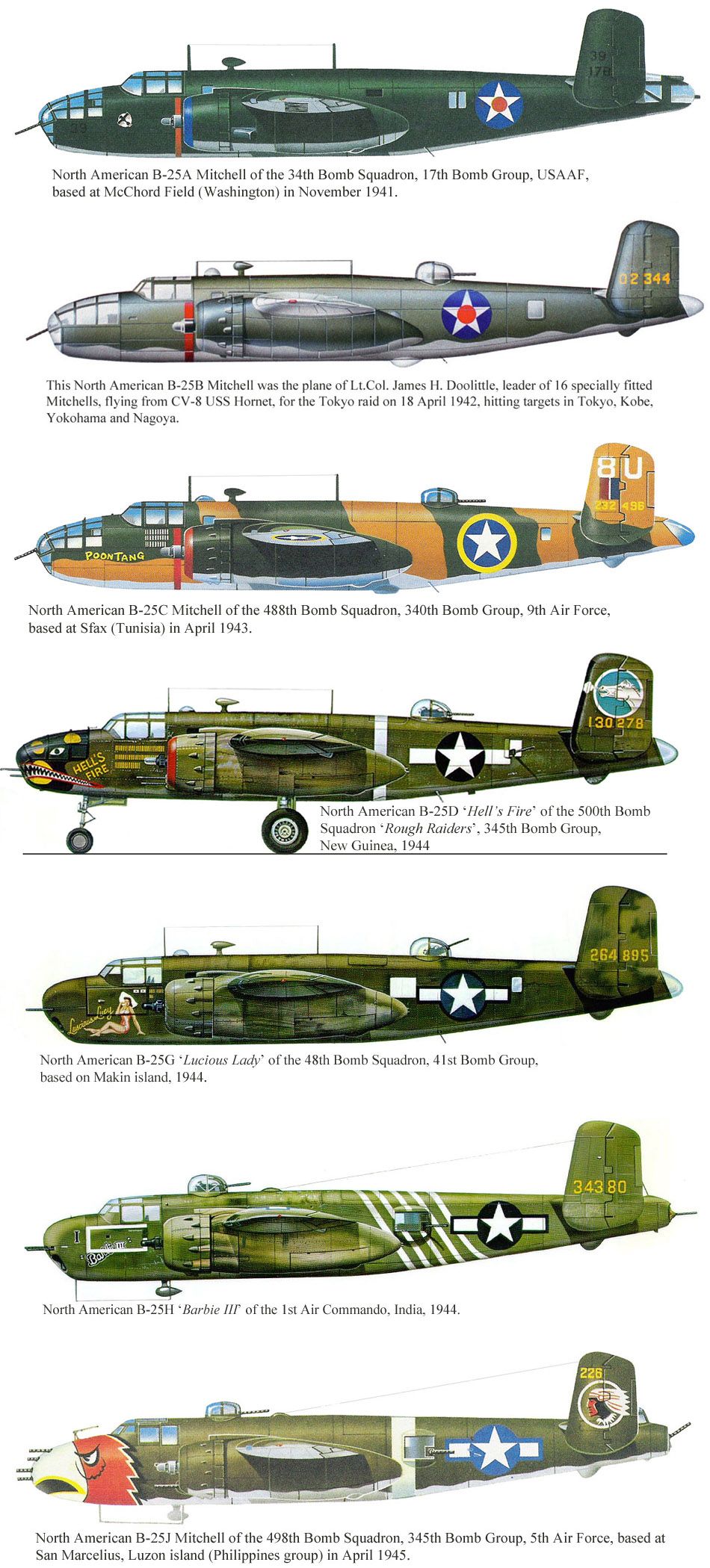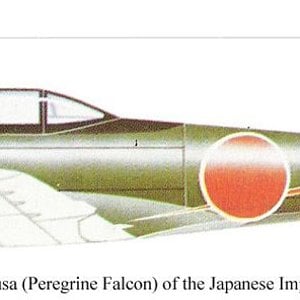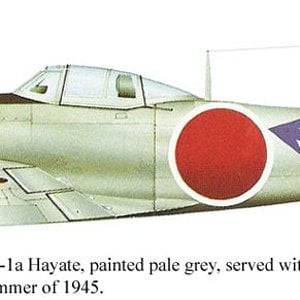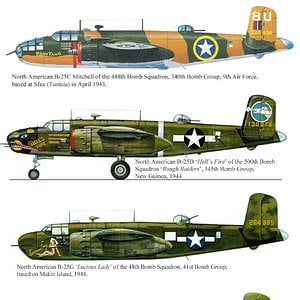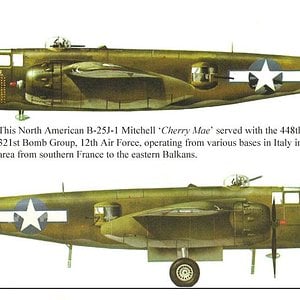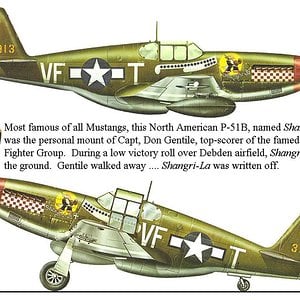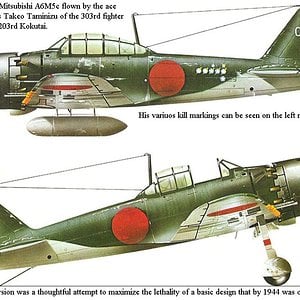Navigation
Install the app
How to install the app on iOS
Follow along with the video below to see how to install our site as a web app on your home screen.
Note: This feature may not be available in some browsers.
More options
You are using an out of date browser. It may not display this or other websites correctly.
You should upgrade or use an alternative browser.
You should upgrade or use an alternative browser.
The North American B-25 Mitchell was an American twin-engined medium bomber. It was used by many Allied air forces, in every theater of World War II, as well as many other air forces after the war ended, and saw service across four decades.
The B-25 was named in honour of General Billy Mitchell, a pioneer of U.S. military aviation. The B-25 is the only American military aircraft named after a specific person. By the end of its production, nearly 10,000 B-25s in numerous models had been built. These included a few limited variations, such as the United States Navy's and Marine Corps' PBJ-1 patrol bomber and the United States Army Air Forces' F-10 photo reconnaissance aircraft.
The majority of B-25s in American service were used in the Pacific. It fought on Papua New Guinea, in Burma and in the island hopping campaign in the central Pacific. It was in the Pacific that the aircraft’s potential as a ground attack aircraft was discovered and developed. The B-25 also proved itself to be a very capable anti-shipping weapon, sinking many of the ships being used to reinforce the Japanese position.
The RAF received nearly nine hundred Mitchells, using them to replace Douglas Bostons, Lockheed Venturas and Vickers Wellington bombers. The Mitchell entered active RAF service on 22 January 1943. At first it was used to bomb strategic targets in occupied Europe. After the D-Day invasion the RAF used its Mitchells to support the armies in Europe, moving several squadrons to forward airbases in France and Belgium.
Info: Wikipedia
http://en.wikipedia.org/wiki/North_American_B-25_Mitchell
Profiles:
American Aircraft Of World War II
Published by Chancellor Press Ltd.
Wings Palette
http://wp.scn.ru/en/
Fighting Aircraft of World War II
Published by Salamander Books.
The B-25 was named in honour of General Billy Mitchell, a pioneer of U.S. military aviation. The B-25 is the only American military aircraft named after a specific person. By the end of its production, nearly 10,000 B-25s in numerous models had been built. These included a few limited variations, such as the United States Navy's and Marine Corps' PBJ-1 patrol bomber and the United States Army Air Forces' F-10 photo reconnaissance aircraft.
The majority of B-25s in American service were used in the Pacific. It fought on Papua New Guinea, in Burma and in the island hopping campaign in the central Pacific. It was in the Pacific that the aircraft’s potential as a ground attack aircraft was discovered and developed. The B-25 also proved itself to be a very capable anti-shipping weapon, sinking many of the ships being used to reinforce the Japanese position.
The RAF received nearly nine hundred Mitchells, using them to replace Douglas Bostons, Lockheed Venturas and Vickers Wellington bombers. The Mitchell entered active RAF service on 22 January 1943. At first it was used to bomb strategic targets in occupied Europe. After the D-Day invasion the RAF used its Mitchells to support the armies in Europe, moving several squadrons to forward airbases in France and Belgium.
Info: Wikipedia
http://en.wikipedia.org/wiki/North_American_B-25_Mitchell
Profiles:
American Aircraft Of World War II
Published by Chancellor Press Ltd.
Wings Palette
http://wp.scn.ru/en/
Fighting Aircraft of World War II
Published by Salamander Books.

